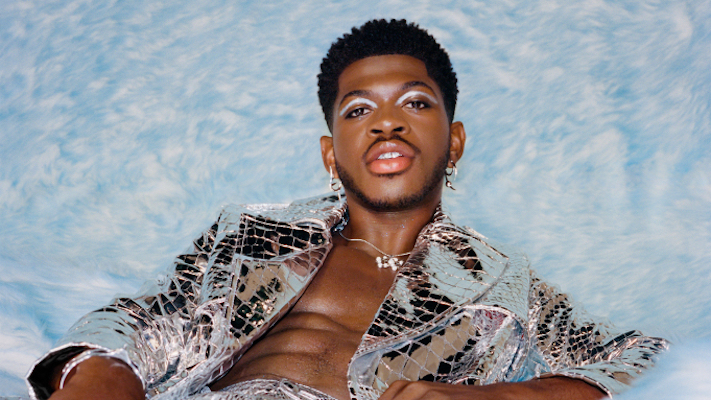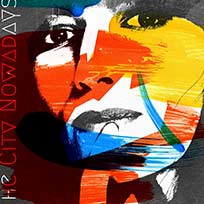
The Source |Future of Advertising in Hip-Hop Culture
[ad_1]
It’s no secret that the hip-hop culture has always had a mutually beneficial, yet complicated, relationship with capitalism. Since its inception, the hip-culture has both reflected current consumerism as well as influenced it. Since Snoop Dogg first donned a Tommy Hilfiger shirt in the early 90’s to current artists promoting products on their Instagram page, the advertising industry has relied on the hip-hop community to set trends and influence fans. But in a highly digitalized world that’s been upended by the recent global coronavirus pandemic, does the old model still work? The answer: sort of.
Advertisers still recognize the importance of the large and diverse hip-hop community, but they also realize that this audience is more skeptical of traditional advertising methods than prior generations. The most savvy advertisers realize that advertising is no longer a passive user experience, but rather an interactive one, blurring the lines that have traditionally divided consumer, promoter, and the product itself. The following are some ways that advertisers are integrating themselves into the hip-hop culture (and how hip-hop culture is directing the future of advertising)
Increased Product Placement
In the past, companies might “influence” an artist to give their product a shout-out in their song or music video. Why did the Escalade, a car largely marketed to men over 65 suddenly go from Pebble Beach to making an appearance in every other hip-hop video in the early 2000’s? The answer lies in creative product placement. Between 2000 and 2003, the Escalade was featured in the Hollywood blockbusters Gone in Sixty Seconds and The Matrix Reloaded, the lyrics to Jennifer Lopez’s hit “Love Don’t Cost a Thing,” Jay-Z’s music video “Dirt Off Your Shoulder,” as well as a dozen other mainstream releases.
Product placement is reliant on the social theory of fads, which is rooted in collective value‐added theory- a theory that has been around for centuries. The theory basically says that collective actions occur only in certain social conditions and when certain factors build one another so that it results in a positive collective action. A company that makes the right partnership or placement adds value to their business. The value‐added theory suggests that when a social system is structurally conducive to collective action, a generalized belief emerges within said group, and a selection of participants can be mobilized to act, and a collective action will occur. The non-academic translation: if enough people think something is cool, it becomes cool. Whereas “influencer” marketing saw its peak come and go in a relatively short time span, hip-hop artists will always be seen as cool by their target audience- something that top advertisers recognize as they continue to nurture relationships with today’s hottest artists.
Aljoša Jankov, a hip-hop academic scholar from the University of Lappeenranta, notes that some brands do hold endorsement contracts with certain artists, but most of the artists promote various brands for free, which is a very interesting phenomenon. This is likely the result of several key factors.
First, there’s the most pragmatic approach: finding something that rhymes. In 2015, Lloyd Banks described in an interview how he would go through the ad pages of major hip-hop magazines (most notably The Source), and identify brand names that he would use to enrich the content and craft rhymes more easily by finding appropriate syllables.
On a deeper level, there’s the fact that mentioning brand names without financial influence makes for more organic content. Jay Z describes in his autobiographical book, “Decoded”, how he and his associates used to drink Cristal champagne in clubs (even though Moet was more popular amongst rappers at the time). Hova describes how he saw this as not only a way to express his elevated levels of sophistication, but also as a metaphor of change he was bringing into the hip-hop culture. However, the promotion was met with a frosty response by Cristal’s managing director, Frederic Rouzaud, who simply stated: “We can’t forbid people from buying it” in an interview with The Economist. Jay-Z publicly announced that he will never drink or promote Cristal in any way, nor serve it in his own clubs. Jankov notes that this was an example of how companies fail to notice that rappers add new entries – layers, to the brands they promote, and that they provide a brand story that appeals to the different segment of the market, the one that is likely to be attracted by something dangerous, subversive, audacious or self-made. While Cristal may have brushed off hip-hop endorsement, other brands are clamoring to place their products front and center within the hip-hop culture.
More Engaged Content Integration
While product placement is still relevant in building brand awareness, most marketing experts believe that it takes multiple impressions for a consumer to be able to accurately identify a brand’s attributes. Today’s customers have pretty much unlimited opportunities to zone out when it comes to consuming passive advertising. Ad comes on Hulu? Check out the smartphone screen. Ad plays during Spotify? Put the phone down and look at the laptop. The best way to ensure audience awareness is to engage with an already engaged audience. From an advertiser perspective, this might mean asking users to participate in surveys on YouTube, selecting a commercial to watch on Hulu, or even completing tasks requiring brand integration in video games. For example, in the Death Stranding, (a post-apocalyptic PlayStation game), the player drinks branded Monster Energy drinks to recharge his stamina. This active participation ensures that not only does the player see the brand, but that it becomes an integral part of his or her overall game strategy.
Gaming the System
On the flip side, this same approach has proven useful for upcoming hip-hop artists to get their content in front of new audiences. Much like how consumers have grown numb to traditional advertising, most people have also become immune to aspiring rappers and musicians promoting their new mixtape on social media. One creative way that new artists have organically placed themselves in front of new audiences is by integrating their songs into popular video games. One recent notable example is Travis Scott’s 50-song soundtrack that was specifically curated for NBA 2K19 . The soundtrack included tracks by hip-hop legends such as Mike Jones as well as artists who were relative newcomers at the time including Lil Flip, Migos, Lil Uzi Vert, and more. This year’s soundtrack places relatively newer artists such as Jack Harlow and Roddy Rich alongside industry giants such as Post Malone, Wiz Khalifa, and Lil’ Wayne. The NBA 2K video game franchise’s soundtrack has become so popular that they actually have open submissions to be on the next year’s soundtrack. In the future, it’s highly likely that more video game franchises will court new artists for mutually beneficial partnerships.
Exploring the Metaverse
Video games also capitalize on the appeal of popular hip-hop artists and have begun to integrate them into their games in other interactive ways. For example, Lil Nas X hosted a “live” virtual concert on kid-friendly online game platform Roblox. Fortnite has hosted similar virtual concerts by mainstream artists such as DJ Marshmello and Travis Scott, the latter of which 12 million players were reported to have tuned in for. All of the experiences allowed the artists to create their own virtual avatars, giving them a larger amount of creative control than with a traditional live concert experience.
These virtual events are said to take place in the “metaverse,” a term that generally refers to a a collective virtual shared space, created by the convergence of virtually enhanced physical reality, augmented reality, and the Internet. Basically, it a second world that anyone with an internet access can quickly and easily escape to- and that both artists and brands are flocking to.
Speaking about the Metaverse at SXSW in March, Jon Vlassopulos, Roblox Global Head of Music, said that the Lil Nas X event was such a success that many of his young users considered the event their first concert. He also emphasized that virtual platforms are an opportunity for artists to showcase their personality outside of official music platforms and traditional social media.
“With [music streaming platforms], you have a bio and a photo as artists, but there’s not too many opportunities to address your creativity,” said Vlassopulos. “Having this Metaverse palette, really it’s only limited by your imagination. Moving forward, we’re just scratching the surface.”
From a branding perspective, the Metaverse world is prime space for virtual billboards, interactive user experiences, and other targeted advertising opportunities. Due to the availability of not just user demographic data, but also user choices, it doesn’t take a complex AI algorithm to create highly-personalized targeted ads that appeal to users.
This phenomenon marks a major shift in the future of advertising with regards to the traditional hip-hop business model, which was usually a business-to-consumer (B2C) model. In the past, an artist hyped up a product or brand directly to listeners. With the interactive model, artists and brands now have to develop strategic business-to-business (B2B) relationships as well as find a way to involve the target audience (consumers/users).
A Multiverse of Future Possibilities
While the Metaverse may be the immediate future of the intersection of hip-hop and advertising, the distant future remains unclear. This is due to the ever-changing hip-hop landscape. Ankov notes that “what differentiates hip hop music from other genres is its nature of constant changing and diversity. Hip Hop doesn’t have a strict sound, but is always evolving.” How that evolution looks is anyone’s best guess, but one thing is for certain- the future of hip-hop and business are likely to remain intertwined in marriage for years to come.
[ad_2]
Source link



No Comments